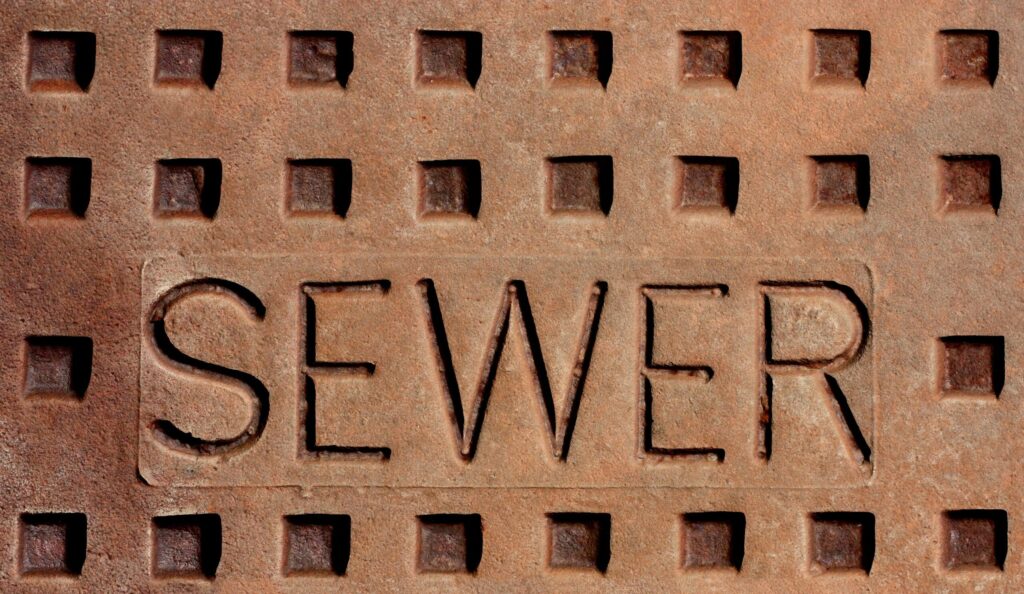When you’re buying a home, sewer lines are probably the last thing on your mind. Buried underground, they’re sort of an out-of-sight, out-of-mind part of homeowning—until something goes wrong.
A lateral sewer line is a pipe that connects your home’s plumbing to the main municipal sewer system. You want it running smoothly. If not, it can be a very expensive (and messy) repair. Don’t panic! We’re here to walk you through everything you need to know about lateral sewer line repair.
Signs You Need a Lateral Sewer Line Repair
First up, is your sewer line working properly? Here are some of the signs that might indicate otherwise:
Sewage Backup
If there’s sewage backing up into your toilets, bathtubs, or sinks, you need to contact a plumbing repair service immediately. Don’t try to fix this yourself, as it’s easy to make it worse without the right tools or experience.
Foul Odors
If you smell sewage around your home or yard, it’s a sign there may be a crack or break in your lateral sewer line. It causes gases to escape, creating a foul odor.
Persistent Drain Clogs
If multiple drains in your home are slow or clogged, there may be a bigger problem than just hairballs or food scraps. It could signal damage or buildup in your lateral sewer line.
Foundation Cracks
A damaged lateral sewer line can show itself in different ways, including soil erosion under your home. If you notice new cracks in your foundation or walkways, it can signal there’s an issue.
What Does Lateral Sewer Line Repair Involve?
Okay, you’ve confirmed you have a sewer line issue. What happens next? Here’s a look at some of your options.
Traditional Dig-and-Replace Method
Dig-and-replace is exactly what it sounds like. A professional plumbing repair company will dig down to remove the damaged section of the sewer line and replace it with a new one.
It fixes the problem but can also be very messy and expensive (for example, if your pipe runs under your driveway). Consult professionals to determine if this is the only option.
Trenchless Pipe Repair
The trenchless method lets the plumber repair or replace the sewer line without extensive digging. If the line isn’t severely damaged, this is an excellent non-invasive (and less expensive) method.
Spot Repairs
If you manage to catch the minor issue on time, you can often get by with a spot repair. A plumber will repair a specific part of the pipe instead of replacing the whole line.
How to Prevent Sewer Line Problems
Sewer problems are not fun to deal with, so you want to be proactive and prevent issues from happening in the first place. Here are simple things you can do to make sure your line is working properly.
- Flushable Doesn’t Always Mean Flushable: This is one of the biggest reasons for sewer line blockages. Try to only flush down toilet paper and human waste. Do not flush down wipes, even if they say “flushable” on the package.
- Mind What Goes Down the Drain: Try to throw out cooking grease, coffee grinds, and food scraps into the trash, not down the sink. Even if they don’t block the drain, they can cause bigger problems further down the line.
- Book Regular Inspections: Why wait until there’s a problem? Ask a plumber to inspect your sewer line for any issues. They will tell you if you need lateral sewer line repair long before you discover a problem.
Conclusion
You don’t want to wait and be forced into thinking about lateral sewer line repair because you have a major issue on your hands. Routinely booking a plumbing inspection can help save you money in the long run. If a minor issue pops up, it can be dealt with on the spot without any big digs or replacements.
Contact us now to get a professional inspection and repair service to keep your plumbing flowing smoothly.
FAQ’s About Lateral Sewer Line Repair
1. What is a lateral sewer line, and why is it important?
A lateral sewer line is the pipe that connects your home’s plumbing to the city’s main sewer system. It’s essential because any damage or blockage in this line can lead to costly repairs, sewage backups, and unpleasant odors around your home.
2. What are the signs that I need lateral sewer line repair?
Common signs include sewage backing up into your sinks or toilets, foul odors around your home, multiple slow drains, and cracks in your foundation or walkways due to soil erosion.
3. How is a damaged lateral sewer line repaired?
There are a few methods, including traditional dig-and-replace, trenchless pipe repair, and spot repairs. The best method depends on the severity and location of the damage.
4. How can I prevent problems with my lateral sewer line?
Avoid flushing anything other than toilet paper and human waste, don’t pour grease or food scraps down the drain, and schedule regular sewer line inspections with a plumber to catch issues early.


Schedule a Service or Request a FREE Estimate Now: